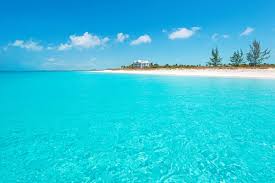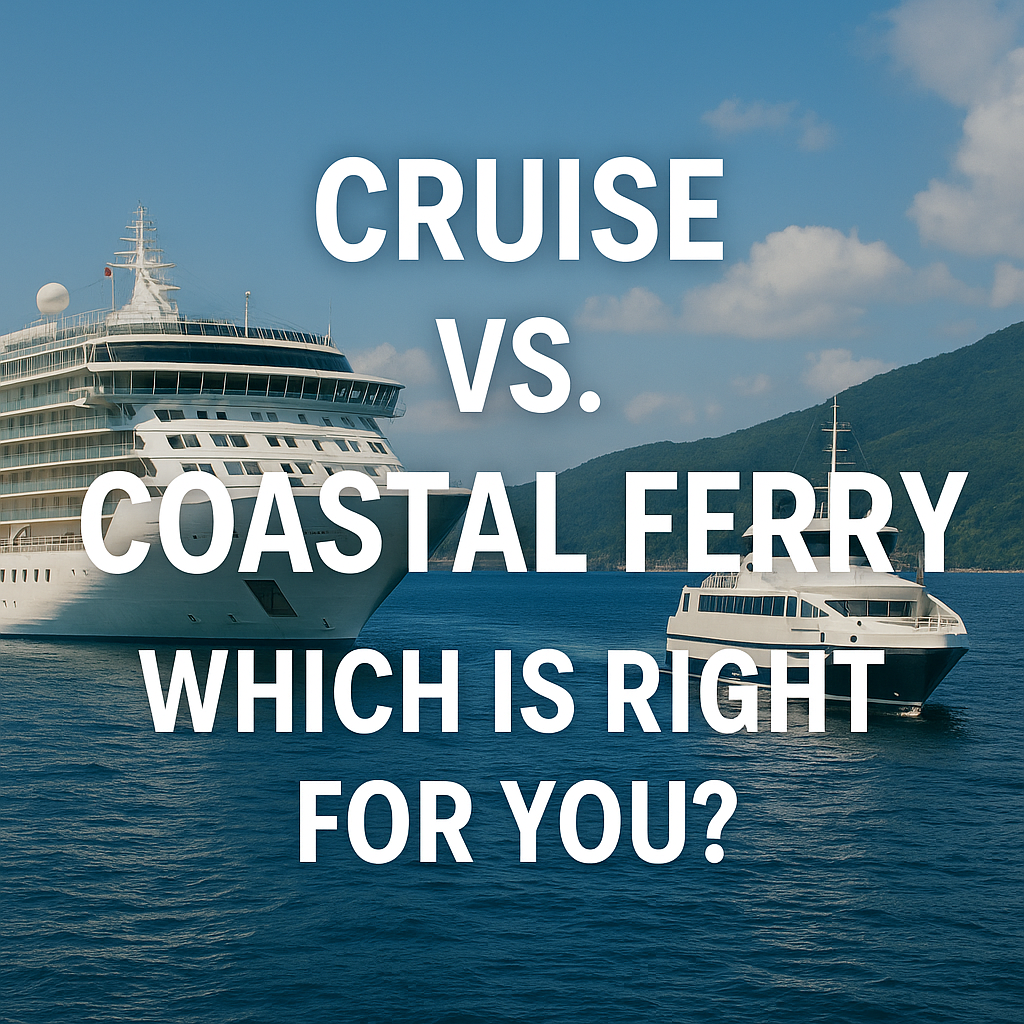Trying to decide between a cruise and a coastal ferry for your next sea journey? Explore the pros, cons, costs, comforts, and sustainability of each option in this comprehensive, expert-led maritime guide.
A Comparative Guide to Help You Navigate Your Next Maritime Journey
Why the Cruise vs. Coastal Ferry Debate Matters in Modern Travel
In today’s evolving maritime landscape, travelers are offered more sea-based options than ever before. While cruises continue to attract those seeking floating luxury resorts, coastal ferries have surged in popularity for their practicality, affordability, and regional authenticity. Understanding the differences between these two modes of maritime transport isn’t just about comfort—it’s about aligning your travel goals with the right vessel, experience, and environmental impact.
According to the Cruise Lines International Association (CLIA), over 35 million people are expected to cruise in 2025, while regional ferry operators across Europe and Asia continue to report post-pandemic ridership recoveries above 90% of pre-2020 levels (source: British Ports Association, 2024). With advancements in green propulsion systems, digital onboard services, and multi-modal travel infrastructure, this decision is more complex—and more interesting—than ever.
Let’s break down the differences, advantages, challenges, and emerging trends in both cruise ships and coastal ferries.

Defining the Difference: Cruise Ships vs. Coastal Ferries
What Is a Cruise?
Cruises are multi-day voyages on large vessels that combine transportation with leisure. Ships like the Celebrity Beyond or Queen Mary 2 carry thousands of passengers and are equipped with theaters, spas, pools, shopping malls, and multiple restaurants. They typically stop at tourist destinations along a defined itinerary.
Cruises are ideal for:
-
Long, leisurely travel
-
All-inclusive vacation experiences
-
Entertainment at sea
-
Round-trip or looped routes
What Is a Coastal Ferry?
Coastal ferries are shorter-distance maritime services designed primarily for point-to-point transport. These vessels may range from small inter-island catamarans to larger roll-on/roll-off (RoRo) ferries like those used by BC Ferries, CalMac (Scotland), or Tallink Silja Line in the Baltics.
Ferries are ideal for:
-
Shorter or overnight travel
-
Connecting regional coastal communities
-
Budget-conscious and flexible travelers
-
Multimodal trips (train + ferry + bus)
–
In-Depth Comparison: What to Expect on Board
– Comfort and Amenities
Cruise ships focus heavily on comfort, offering air-conditioned cabins, gourmet dining, spas, pools, and Broadway-style shows. Premium lines include butler service, private balconies, and shore excursions.
Ferries, while simpler, often have:
-
Reclining seats or basic cabins (overnight)
-
Cafeterias or self-service dining
-
Deck access for scenic views
-
Fast boarding for foot passengers and vehicles
Real-World Example:
Wärtsilä engines power many coastal ferries in Scandinavia with hybrid-electric propulsion, offering quiet, smooth rides even in overnight cabins.
– Cost and Value for Money
Cruises bundle meals, entertainment, and accommodation into one package. Depending on the line and season, prices can range from USD $100 to $500 per night per person.
Coastal ferries operate more like buses or trains:
-
Short hops may cost less than $30
-
Overnight cabins can range from $60 to $150
-
Pay-as-you-go meals
Ferries are better for budget-conscious or independent travelers, while cruises suit those seeking inclusive luxury.
– Destinations and Accessibility
Cruises are often international, stopping at curated tourist ports such as:
-
Venice, Santorini, or Barbados
Ferries serve regional or domestic ports such as:
-
Portsmouth to Guernsey
-
Naples to Capri
-
Vancouver to Victoria
For locals, ferries are a lifeline for commerce, education, and medical access. For travelers, they offer more spontaneous and authentic exploration.
– Environmental Footprint
Cruise ships have historically been high emitters. However, leading lines are improving:
-
LNG-powered vessels (e.g., MSC World Europa)
-
Scrubber systems to reduce sulfur
-
Advanced wastewater treatment (MEPC 227(64) compliance)
Ferries, due to their shorter journeys, typically emit less per trip, and many are transitioning to:
-
Electric propulsion (e.g., Norway’s Ampere ferry)
-
Battery-hybrid systems (e.g., Scandlines’ hybrid ferries)
-
Hydrogen trials in Finland and Scotland
Authority Insight:
The European Maritime Safety Agency (EMSA) encourages ferry electrification through the EMSA THETIS-MRV platform, which tracks maritime CO₂ emissions.

Case Studies: How the Choice Plays Out in the Real World
Case 1: Scotland’s West Coast
Traveling from Oban to the Isle of Mull? A Caledonian MacBrayne ferry takes 45 minutes and costs under £10. It’s efficient, scenic, and integral to Scottish island life. Compare that with a luxury cruise departing from Southampton, which might stop in Kirkwall—but takes days and costs hundreds more.
Case 2: Norway’s Coastal Voyages
Hurtigruten offers a hybrid: a cruise-ferry model. Locals hop on for short distances; tourists book full itineraries from Bergen to Kirkenes with amenities, cabins, and lectures on the Arctic Circle. It’s a powerful example of multi-use maritime strategy that blurs the ferry-cruise line, as praised in DNV’s 2023 report on Norwegian maritime innovation.
–
Recent Developments in Coastal and Cruise Travel (2020–2025)
-
IMO’s EEXI and CII regulations (effective January 2023) pushed cruise and ferry operators to adopt energy efficiency benchmarks.
-
Battery-powered ferries like Ellen in Denmark now operate up to 22 nautical miles with zero emissions.
-
Autonomous ferry trials in Finland (e.g., Rolls-Royce’s Falco) and Japan show coastal systems are becoming tech-forward.
-
Cruise ships like Royal Caribbean’s Icon of the Seas (2024) incorporate AI-controlled HVAC and waste-to-energy plants onboard.
–
Pros and Cons Summary
| Category | Cruise Ship | Coastal Ferry |
|---|---|---|
| Comfort | High (luxury cabins, amenities) | Moderate to basic |
| Cost | High, all-inclusive | Low, a la carte |
| Flexibility | Limited (fixed itinerary) | High (multiple sailings per day) |
| Sustainability | Improving, still emission-heavy | Often greener, especially electric |
| Target Users | Leisure travelers | Commuters, regional tourists |
| Duration | Days to weeks | Minutes to hours |
–
Frequently Asked Questions
1. Is a coastal ferry safer than a cruise ship?
Both must meet SOLAS (Safety of Life at Sea) standards and are inspected regularly by port state control authorities like Paris MoU.
2. Can I sleep on a ferry like I can on a cruise?
Yes—many longer coastal routes offer cabins, especially overnight. However, amenities are basic compared to cruise suites.
3. Which is better for the environment?
Electric or hybrid ferries are currently among the greenest maritime options, especially on short routes. Cruises are improving but remain resource-intensive.
4. Are there luxury coastal ferries?
Some premium ferry services, like those in the Baltics (Tallink’s Megastar), offer business lounges, luxury cabins, and gourmet dining, but they’re not full-service resorts like cruises.
5. Do ferries offer entertainment like cruises?
Typically no. Ferries focus on transportation, though some may have cafés, Wi-Fi, or live music. Cruises are designed for onboard enjoyment.

